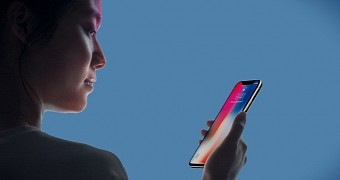Police officers in the United States are being instructed how to handle an iPhone X or iPhone XS seized as part of a criminal investigation, with official documents emphasizing that law enforcement should avoid looking at the device directly.
Slides shown by forensics company Elcomsoft during a presentation with US police officials recommend avoiding eye contact with new-generation iPhones because otherwise, the devices can end up locked up for ever.
Face ID, the facial recognition system on the new iPhones, allow five different failed scanned attempts, after which the user is prompted to provide the password.
Under the Fifth Amendment, suspects can refuse to provide their passwords, so police officers shouldn’t waste the unlock attempts by looking at the device.
Don’t waste any face recognition attempt!
Elcomsoft CEO Vladimi Katalov says not handling the new-generation iPhones correctly can lead to an incident similar to what happened during the 2017 iPhone X launch event when Craig Federighi was required to enter the passcode instead of having his face scanned. After the show, Apple said this was triggered by the employees who used the iPhone X backstage and who had their faces scanned.
“This is quite simple. Passcode is required after five unsuccessful attempts to match a face. So by looking into suspect’s phone, [the] investigator immediately lose one of [the] attempts,” Katalov explained in an interview with Motherboard.
“With Touch ID, you have to press the button (or at least touch it); that’s why we always recommend (on our trainings) to use the power button instead, e.g to see whether the phone is locked. But with Face ID, it is easier to use ‘accidentally’ by simply looking at the phone,” Katalov continued.
More recently, it was revealed that police officers in the US required a suspect in a child abuse case to unlock an iPhone using his face, as they believe incriminatory evidence was stored on the device.

 14 DAY TRIAL //
14 DAY TRIAL //